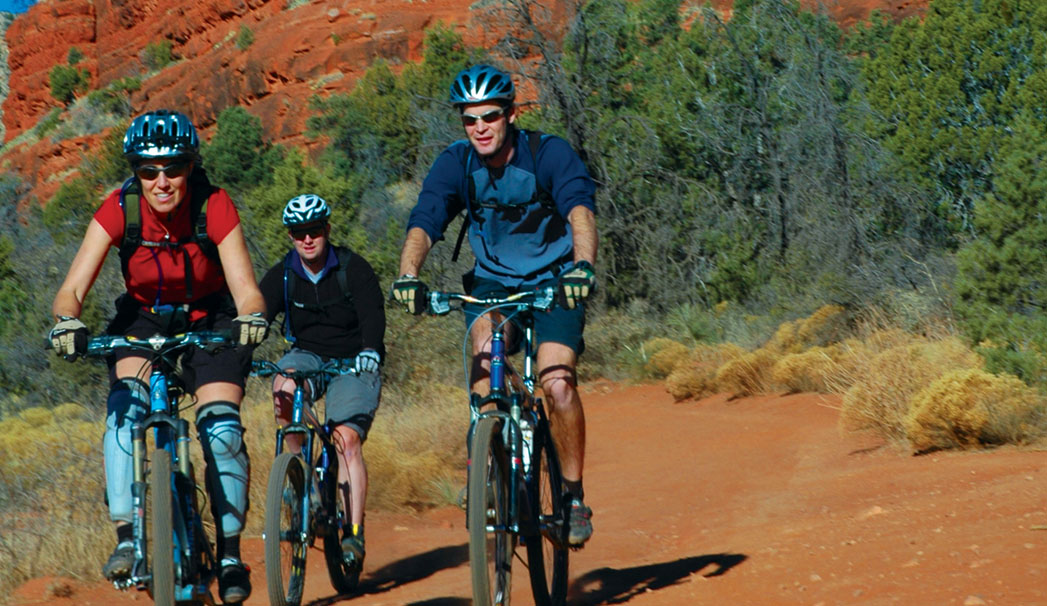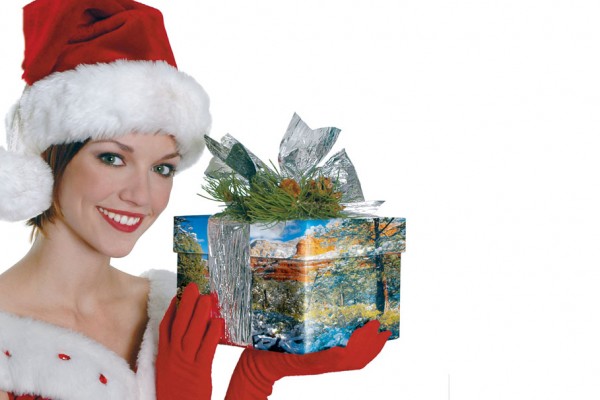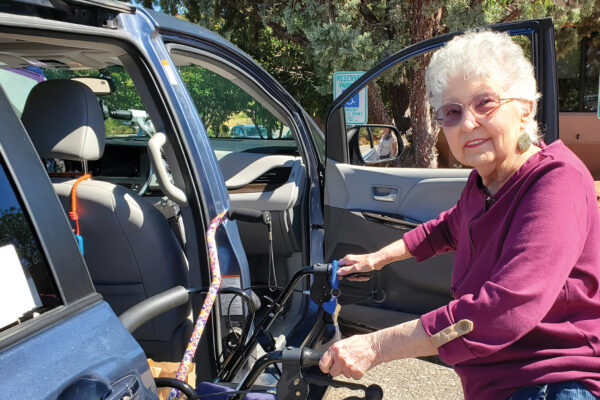Ask Sedona residents why they settled in Red Rock Country and you’ll hear some variation of this response again and again: It was just too pretty to leave. Visitors get the message too, flocking in huge numbers to our small corner of Arizona for a glimpse. While some are content to take in the beauty at arm’s length from balconies and patios, nothing builds a bond with the landscape like slathering on some sunscreen and making contact – feeling the slick rock under your fingertips, climbing to a high-top perch for a bird’s-eye view, spying on lizards lounging in the sun or minnows swimming upstream. To help you discover the greatest of Sedona’s great outdoors experiences, we quizzed local experts on four of the most popular activities: Hiking, mountain biking, rock climbing, and camping. Besides sharing the basics and favorite spots for their favorite sports, they offer key tips for staying safe while having fun. Get the scoop and a refreshing view of Sedona, on the rocks!
Hiking
West Fork, Boynton Canyon, Bear Mountain
Sedona has 290 miles of trails, ranging from leisurely strolls to high-intensity climbs that require the dexterity of Spider-Man. The higher you go the more breathtaking the view, but even the easiest trails offer inspiring looks at red rocks, green trees and bubbling creeks.
Unfortunately, the enticing scenery sometimes leads visitors to overlook necessary preparation. Connie Birkland of the Red Rock Ranger District says some drivers approaching on Hwy 179 get so excited to see Bell Rock that they pull over, hike up on a whim, and twist an ankle on the descent. “Once they’re up on the rock without the right footwear,” she says, “they realize it’s a lot more challenging to climb down.”
They learn the hard way what Gary Stedman, co-owner of Canyon Outfitters in West Sedona, wants all hikers to know in advance: A decent pair of boots tops any list of important Sedona hiking gear.
“Some of our trails are easy but they are still rugged – there are a lot of rocks,” Gary says. “Plus the red rocks are slippery when wet.” On this jagged terrain, sneakers just won’t cut it.
Cardinal rule No. 2 is to carry plenty of water – even on a cool day – because Sedona stays very dry even in winter. Wearing a hydration pack is more practical than carrying a water bottle because it takes up less space (the bladder in the pack shrinks as you drink) and hikers tend to sip more often with the pack’s tube close by. On a more strenuous hike, bring an electrolyte replacement drink such as Gatorade to ensure constant hydration.
Along with proper hiking boots and water, Gary recommends bringing along a map of the area– preferably a topography map – whistle, first-aid kit, knife, light source, energy bars and the right clothes, particularly a hat and sunglasses. Gary says hiking staffs have become very popular to increase stability and ease pressure off the legs by distributing the effort throughout the body (this hiker doesn’t leave home without them).




